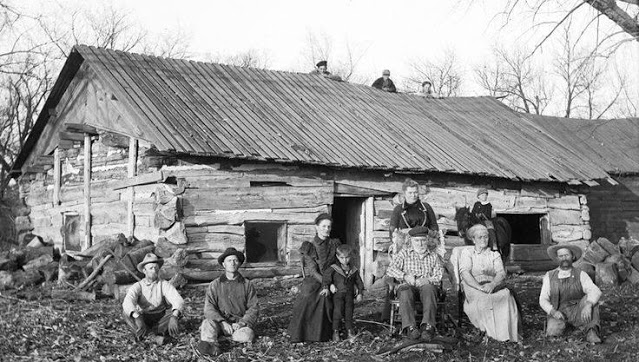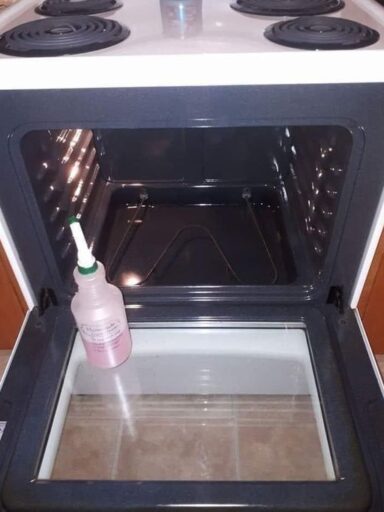Cooking was a major part of every day. Early settlers slaughtered their own meat and made beef, sausage, and smoked and dried meats. The large gardens yielded products for canning, pickling, and other canning. Root cellars store potatoes, carrots, and onions. The milk was separated into cream for butter, bread, and milk for drinking. Bread, cakes and pies were of course baked at home from scratch whatever was available.
For the most part, the meals were casual and the food was delicious. Nothing is wasted. Dried bread was making bread pudding; The bone was turned into soup and the extra milk was turned into pudding or cheese. Often there was a shortage of some ingredients. As you’ll see from the recipes, a lot of them are based on very basic ingredients and many of them depend on how you prepare a meal with just a few ingredients. The recipes will not only be for food but also for perfumes, home remedies, wine making, and soaps.
Recipe books were not popular and cooking was a hereditary art or trial and error. It is interesting to read recipes from this period, as they are often vague and written with some small hints that only the person who wrote them would understand.
Sure enough, the pioneering women who had to decide the few valuables to carry across the plains made one common choice – their individual set of “receipts,” as recipes have been called out. To them, this was a reminder of a security left behind and a hope of future abundance. Meanwhile, they simply did what they had to do to keep their families alive.
Many of the early memories of pioneering food were related to the economy in which the saints lived: “We lived on cornbread and molasses in the first winter.” “We couldn’t get enough flour to bake … so we could only make it into a thin porridge that we call Kelly.” “Often times … lunch was dry bread … .” “In these times we had nothing to waste; we had to make things last as long as possible.” *
There is no doubt that the “receipts” books were closed during these times, and efforts were simply made to find the food and make it go as far as possible.
But slowly, even given this denial, the recipes grew. The pioneers learned to use any small bits of leftover meat and poultry with the vegetables they had on hand – carrots, potatoes, corn, turnips and onions – to make a pie dipped in Mormon broth.
A side of pork and mormon gravy
Mormon broth, a popular food among early settlers and apparently a must-have for juicing, is still a delicacy and nutritious for many of this generation who love making it with ground meat, pork or bacon and serving it on baked potatoes.
° 8 side thick slices of ham (or thick slices of bacon)
° 4 tablespoons of meat broth
° 3 tablespoons flour
° 2 cups milk
° Salt, pepper, paprika
Cook the meat on both sides in a heavy skillet until soft. Then remove from pan and warm. Measure the fat and return the required amount to the pan. Add flour and brown a little. Remove from heat and add milk, stirring well, to mix. Return to the stove, cook and stir until the mixture is thick and smooth. Season to taste. Serve with pork side on fries, biscuits, cornbread, or even pancakes.
Clay apples
This is a variation of the Native American cooking method.
- Will need
° 4 large apples
° A bucket of clay
Cover the apples with about 1 inch (2.5 cm) of clay on all sides, making sure the clay has a nice thick consistency. When the fire has burned long enough to form some coals, ask the adult to help you pull some of the coals aside. Bury the apples in charcoal and leave them for 45 minutes. Scrape the cooled charcoal. Get rid of dry, cooked mud from the apples and get rid of the peel. Pour in the steamy pulp for an amazing treat.
Some groups of Native Americans used clay paint on their food as a kind of oven. The mud vapor will keep the fresh fish moist, and when it dries up and becomes like mud, protects the food from burning. When the clay was peeled off, he took many fish scales with it. A delicious quick meal
Chuckwagon beans
This is a midwestern cattle trail recipe. Although this was originally done on a campfire, it might be best to bend down to modern comfort and do cooking on a stove top.
- Will need
° 16 oz pack of dry pinto beans
° 9 cups of water
° Two large onions, peeled and chopped
° 2 teaspoons of salt
° Half a teaspoon of thyme
° Half a teaspoon of garlic powder, or two cloves of chopped garlic
° Half a teaspoon pepper
° 1 tablespoon brown sugar or molasses (add the latter, add more if you like).
Wash the beans and heat them with 6 cups of water until they boil for five minutes, then turn off the stove. Let them sit for an hour. Add three more cups of water and boil again. Now add everything else, stir, and cook for about an hour.
Cowpokes on the western drive had to settle for foods that were portable. This means a basic menu of beans and a lot of meat. As a treat, there was cornbread, biscuits, or a sweetened rice dish. The pinto beans (small and spotted when raw, like pinto pony) seem to be the favorites. When cooked, these beans swell and turn a kind of white-pink color. It was handed over to settlers for the first time by the natives on the Mexican border.
When you eat beans with rice or corn, the two foods mix in your body to form an important type of protein that resembles the protein found in meat. (Your body is largely made of protein, so you need to eat a lot of it.) This is why the Native Southwest was healthy with a diet that mostly consisted of beans and corn and not a lot of meat.
Baked pocket yams
This was “useful” during the winter months, and is not specific to any one region of the country.
Take several sweet potatoes, roll them individually in foil, and line them on all sides with hot charcoal.Cook until sweet steam tubes come out of the foil (about 45 minutes). Slide the potatoes with a clean, sharp twig to check that they are done (the center will be soft).
When the potatoes are ripe, do not eat them yet. Let them cool down a little, then insert one into each pocket to use as a hand warmer. These will keep you comfortable while chatting around the campfire. Leading mothers used to send their children with these in the winter months to keep their hands warm during the long walks to school. When you eat your food, you may want to use a plate and spread it with butter.
Spotted Puppy
Take any required amount
For a hungry cowboy of thin-cooked rice.
Put in the Dutch oven and cover with milk and eggs, well beaten.
Add a pinch of salt.
Sweetened well with sugar.
Add raisins, a little nutmeg and vanilla.
Bake in a slow oven until the egg mixture is soft and the raisins are soft.
Jerky broth
° Jerky, ground or fine
° Little fat or grease
° Flour
° Pepper salt
° Milk
Fry Jerky until soft.
Lift the meat from the fat and add the flour.
Add milk, salt and pepper. Cook the broth. Add meat to the broth.
The amount of each ingredient depends on how much broth you want.
Lemon pie
° A cup of hot water
° A tablespoon of cornstarch
° A cup of white sugar
° A tablespoon of butter
° Juice and the peel of a grated lemon
Cook for several minutes; Add one egg baked with the top and bottom crust.
This makes one pie.
Cooked cabbage salad
° Half a liter or more of chopped cooked cabbage
° Add: 1 egg, beaten well
° A cup of vinegar
° 1 teaspoon butter
° Pinch of salt and pepper
Sweetening to suit the taste. Simmer for a few minutes and add half a cup of fresh cream. Serve immediately.
Hash winter red flannel
A great way to use up leftover beef is to add some new ingredients and create a Red Flannel Hash. Who knows who came with the beets, but it really is colored, and sticks to the ribs.
° 1 cups of ground beef
° 1 cups chopped cooked beets
° 1 medium onion, chopped
° 4 cups cooked, chopped potatoes
Chop the ingredients separately, then mix together.
After a nice crust forms on the bottom, turn it over on a warm plate and serve.
If it looks a little dry, add a little beef broth.
Try with a pair of boiled eggs for a hearty meal.
Spiced Corn Beef
To 10 pounds of beef …
° 2 cups salt
° 2 cups molasses
° 2 tablespoons of rock salt
° 1 tablespoon ground pepper
° 1 tablespoon cloves
Rub the meat well.
Turn every day and rub the mixture.
It will be ready to use in 10 days.
Allow the milk to form a crust.
Remove the cream from the cream once.
Put the powdered milk on very low heat and cut into 1 inch squares.
Place the colander in the clapper.
Dip the raised whey into a colander.
When the clabber gets hard, rinse it off with cool water.
Squeeze the liquid and squeeze the ball.
Crumble into a bowl.
Mix the curd with the thick cream.
Mormon Junicake
Here is a form of cornbread that is not only used by Mormon immigrants.
As the name indicates, but mostly by most immigrants traveling west.
Due to the inclusion of curd, the source of fresh milk was a necessity.
° 2 cups yellow cornmeal
° ½ cup of flour
° 1 teaspoon of baking soda
° 1 teaspoon salt
Mix and mix the ingredients
2- A cup of butter milk and 2 tablespoons of molasses.
Pour into a 9 ”buttered saucepan and bake at 425 degrees for 20 minutes.
To get a lighter gunk cake, add two whisked eggs
And 2 tablespoons of melted butter.
Soda biscuit
Take 1 pound of flour and mix it with enough milk to make a hard paste.
Dissolve 1 teaspoon soda carbonate in a little milk;
Add to the dough with a teaspoon of salt.
Work it well together and roll it out thinly;
We cut the round biscuits and bake them in a medium oven.
Sometimes egg yolks are added.
Lemonade vinegar
Mix 1 to 2 tablespoons of apple cider vinegar in a 12-ounce glass of water.
Add two tablespoons of sugar to taste.
Note: Pioneers used vinegar for many reasons.
One of the reasons was adding vitamin C to their diet.
Fried apples
Fry 4 slices of bacon in a Dutch oven. Remove the bacon.
Peel and chop 6 to 8 Granny Smith apples.
We put apples in the Dutch oven with bacon lard,
Cover and cook the apples, but do not mash.
Serve with butter or cream and crumbled bacon.
Great for breakfast or desert!
Dutch oven trout
As soon as possible after catching trout,
Clean it up and wipe the inside and outside of the trout
With a cloth dampened with vinegar water.
Do not put trout in water.
Roll salmon into a mixture of flour,
Dry milk powder
Corn Starch,
Salt and Pepper.
Heat deep fat in a Dutch oven and fry until crunchy and golden brown.
Black Pudding
Here’s an old farm recipe provided by Winkie Crigler, founder and curator of The Little House Museum in Greer, Arizona.
° 6 eggs
° 1 cup sweet milk
° 2 cups flour
° 1 teaspoon soda
° 1 cup sugar
° 1 teaspoon cinnamon
° 1 cup of Molasses
Mix well. Pour into a 1-pound container and steam for 2 to 3 hours by placing it in a kettle of boiling water. Stay covered.
Serve with vinaigrette:
° 1 cup sugar
° 1 tablespoon butter
° 1 tablespoon flour
° 2 tablespoons of vinegar
° ½ teaspoon nutmeg
Put enough boiling water for the required amount of sauce.
Add 2 eggs, lightly beaten, and cook, stirring constantly, to desired consistency.
How to fry quick cakes
The next recipe for muffins came from March 17, 1885, by Dele Missoulian. Anyone who makes these cookies will clearly want to find an alternative to the fat as cooking oil.
Put the frying kettle half full of fat on the fire to heat it. Transfer half a kilo of flour, a teaspoon of salt and baking soda, and half a tablespoon full of grated nutmeg.
We whisk half a pound of butter into the cream and add it to the flour. Beat the yoke of two eggs in a cream, add them to the first ingredients, beat the whites into a stiff foam and preserve.
Mix the flour and sugar with enough curd to make a soft paste, then quickly add the egg white. Immediately spread the dough, shape and fry.
Kid Pie
If the child (goat) is too fat to roast, cut it into pieces and make pies. Make a sauce from chopped parsley and put it in the pancakes with a little sweet oil and put it in the oven.
Just before taking it out of the oven, beat some eggs with vinegar or orange juice and put it in the pie through the holes in the crust for the steam to escape.
Then he put the pancakes back in the oven long enough to repeat the Lord’s Prayer three times, then he took out the pancakes and placed them in front of the house master, cut them and gave them to him.
Brown Gravy
Here’s a farmhouse recipe for gravy from the late 1880s.
This broth can be made in larger quantities, then stored in a stone bowl and used as desired.
Take 2 pounds of beef and 2 small slices of bacon. We cutting meat to little pieces. Put a piece of butter in an egg-sized skillet and put it on a fire.
We cut two large onions into thin slices. We put it in the butter and fry it with a light brown color, then add the meat. Season with whole pepper.
Salt, to taste. Add three cloves, and pour over a cup of water.
Let it boil for fifteen or twenty minutes, stirring occasionally.
Then add 2 liters of water and simmer for two hours.
Apply it now, and when cool, remove all the fat.
To thicken this broth, place a piece of butter a little larger than an egg in a skillet, add two teaspoons of flour, and stir until it is light brown.
When cool, add it to the filtered broth, and bring it to a boil quickly. Serve very hot with the meat.



